Mitochondria-Targeted Antioxidant Mitoquinone Maintains Mitochondrial Homeostasis through the Sirt3-Dependent Pathway to Mitigate Oxidative Damage Caused by Renal Ischemia/Reperfusion
- PMID: 36193071
- PMCID: PMC9526615
- DOI: 10.1155/2022/2213503
Mitochondria-Targeted Antioxidant Mitoquinone Maintains Mitochondrial Homeostasis through the Sirt3-Dependent Pathway to Mitigate Oxidative Damage Caused by Renal Ischemia/Reperfusion
Abstract
Mitochondrial dysfunction is a critical factor contributing to oxidative stress and apoptosis in ischemia-reperfusion (I/R) diseases. Mitoquinone (MitoQ) is a mitochondria-targeted antioxidant whose potent anti-I/R injury capacity has been demonstrated in organs such as the heart and the intestine. In the present study, we explored the role of MitoQ in maintaining mitochondrial homeostasis and attenuating oxidative damage in renal I/R injury. We discovered that the decreased renal function and pathological damage caused by renal I/R injury were significantly ameliorated by MitoQ. MitoQ markedly reversed mitochondrial damage after I/R injury and inhibited renal reactive oxygen species production. In vitro, hypoxia/reoxygenation resulted in increased mitochondrial fission and decreased mitochondrial fusion in human renal tubular epithelial cells (HK-2), which were partially prevented by MitoQ. MitoQ treatment inhibited oxidative stress and reduced apoptosis in HK-2 cells by restoring mitochondrial membrane potential, promoting ATP production, and facilitating mitochondrial fusion. Deeply, renal I/R injury led to a decreased expression of sirtuin-3 (Sirt3), which was recovered by MitoQ. Moreover, the inhibition of Sirt3 partially eliminated the protective effect of MitoQ on mitochondria and increased oxidative damage. Overall, our data demonstrate a mitochondrial protective effect of MitoQ, which raises the possibility of MitoQ as a novel therapy for renal I/R.
Copyright © 2022 Hu Mao et al.
Conflict of interest statement
The authors declare no conflict of interest.
Figures
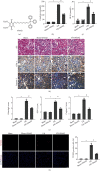
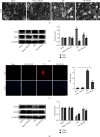
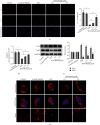

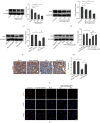
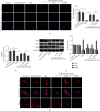
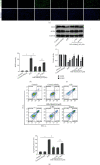
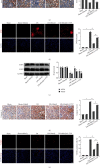
Similar articles
-
The mitochondrially targeted antioxidant MitoQ protects the intestinal barrier by ameliorating mitochondrial DNA damage via the Nrf2/ARE signaling pathway.Cell Death Dis. 2018 Mar 14;9(3):403. doi: 10.1038/s41419-018-0436-x. Cell Death Dis. 2018. PMID: 29540694 Free PMC article.
-
Protection against renal ischemia-reperfusion injury in vivo by the mitochondria targeted antioxidant MitoQ.Redox Biol. 2015 Aug;5:163-168. doi: 10.1016/j.redox.2015.04.008. Epub 2015 Apr 29. Redox Biol. 2015. PMID: 25965144 Free PMC article.
-
Ligustilide alleviates oxidative stress during renal ischemia-reperfusion injury through maintaining Sirt3-dependent mitochondrial homeostasis.Phytomedicine. 2024 Nov;134:155975. doi: 10.1016/j.phymed.2024.155975. Epub 2024 Aug 23. Phytomedicine. 2024. PMID: 39216302
-
Cytoprotective Effect of the UCP2-SIRT3 Signaling Pathway by Decreasing Mitochondrial Oxidative Stress on Cerebral Ischemia-Reperfusion Injury.Int J Mol Sci. 2017 Jul 24;18(7):1599. doi: 10.3390/ijms18071599. Int J Mol Sci. 2017. PMID: 28737710 Free PMC article. Review.
-
MitoQ--a mitochondria-targeted antioxidant.IDrugs. 2007 Jun;10(6):399-412. IDrugs. 2007. PMID: 17642004 Review.
Cited by
-
The Role of Mitochondrial Sirtuins (SIRT3, SIRT4 and SIRT5) in Renal Cell Metabolism: Implication for Kidney Diseases.Int J Mol Sci. 2024 Jun 25;25(13):6936. doi: 10.3390/ijms25136936. Int J Mol Sci. 2024. PMID: 39000044 Free PMC article. Review.
-
Comprehensive overview of the role of mitochondrial dysfunction in the pathogenesis of acute kidney ischemia-reperfusion injury: a narrative review.J Yeungnam Med Sci. 2024 Apr;41(2):61-73. doi: 10.12701/jyms.2023.01347. Epub 2024 Feb 14. J Yeungnam Med Sci. 2024. PMID: 38351610 Free PMC article.
-
Resveratrol mediates mitochondrial function through the sirtuin 3 pathway to improve abnormal metabolic remodeling in atrial fibrillation.Eur J Histochem. 2024 Apr 24;68(2):4004. doi: 10.4081/ejh.2024.4004. Eur J Histochem. 2024. PMID: 38656259 Free PMC article.
-
Honokiol ameliorates pyroptosis in intestinal ischemia‑reperfusion injury by regulating the SIRT3‑mediated NLRP3 inflammasome.Int J Mol Med. 2025 Jun;55(6):96. doi: 10.3892/ijmm.2025.5537. Epub 2025 Apr 26. Int J Mol Med. 2025. PMID: 40280115 Free PMC article.
-
Viral mitochondriopathy in COVID-19.Redox Biol. 2025 Jul 12;85:103766. doi: 10.1016/j.redox.2025.103766. Online ahead of print. Redox Biol. 2025. PMID: 40680383 Free PMC article. Review.
References
MeSH terms
Substances
LinkOut - more resources
Full Text Sources
Medical

